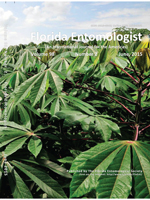Asian citrus psyllid, Diaphorina citri Kuwayama (Hemiptera: Liviidae), is the vector of huanglongbing (HLB or citrus greening disease). Preferences of D. citri adults differed for HLB-infected and healthy citrus under different maturity conditions. The presence or absence of young shoots had a significant influence on the choice by D. citri adults between HLB-infected and healthy citrus hosts. When citrus plants had young shoots, infected plants were more attractive than healthy ones to the adults. Also, D. citri adults fed for a longer time on infected plants with young shoots than on their healthy counterparts. In the absence of young shoots, D. citri adults were at first also more attracted to infected mature leaves, but after 38 h they turned to healthy mature leaves. In a multiple choice experiment, infected young shoots and healthy young shoots were the most attractive, followed by shoots with infected mature-yellow leaves and physiologically mature-yellow leaves, and lastly by healthy or infected mature-green leaves. In an experiment to measure the relative attractiveness of yellow, green, and white boards, yellow color boards attracted more adults than green and white boards, indicating that the adults preferred the yellow color. The results suggest that D. citri adults when first confronted with a choice are more attracted to infected citrus because of the color, but subsequently they move to healthy citrus perhaps because of either the poor nutrition or a feeding barrier in the infected hosts. This behavior appears to facilitate the pathogen's spread.
How to translate text using browser tools
1 June 2015
Movement of Diaphorina citri (Hemiptera: Liviidae) Adults between Huanglongbing-Infected and Healthy Citrus
Fengnian Wu,
Yijing Cen,
Xiaoling Deng,
Jianchi Chen,
Yulu Xia,
Guangwen Liang

Florida Entomologist
Vol. 98 • No. 2
June 2015
Vol. 98 • No. 2
June 2015
Asian citrus psyllid
citrus greening disease
Diaphorina citri
enverdecimiento de los cítricos
hojas fisiológicamente maduras-amarillas
hojas maduras de color amarillo infectadas
infected mature-yellow leaves




